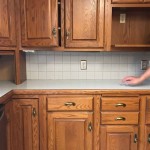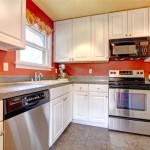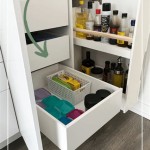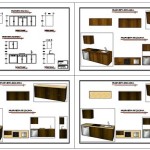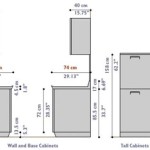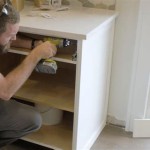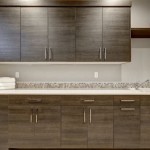Rustic White Painted Kitchen Cabinets: A Timeless Blend of Charm and Functionality
Rustic white painted kitchen cabinets represent a popular design choice, offering homeowners a versatile aesthetic that bridges classic and contemporary sensibilities. This style combines the clean, refreshing look of white paint with the inherent warmth and character associated with rustic design elements. The result is a kitchen that feels both inviting and sophisticated, easily adaptable to various architectural styles and personal preferences.
The appeal of rustic white painted cabinets lies in their ability to create a bright and airy atmosphere while retaining a connection to traditional craftsmanship. Unlike stark modern kitchens that can sometimes feel sterile, kitchens with rustic white cabinets often evoke a sense of comfort and familiarity. This is achieved through techniques like distressing, glazing, and the inclusion of natural materials that highlight the unique textures and imperfections inherent in wood.
The selection of cabinet hardware, countertops, and backsplash materials plays a crucial role in defining the overall style of a rustic white kitchen. By carefully considering these elements, homeowners can tailor the design to reflect their individual tastes and create a space that is both functional and aesthetically pleasing. The enduring popularity of this style suggests its ability to transcend fleeting trends, making it a worthwhile investment for homeowners seeking a timeless and elegant kitchen design.
Key Point 1: The Allure of White and the Essence of Rustic
The color white is often associated with cleanliness, purity, and spaciousness. In kitchen design, white painted cabinets can visually expand the room, making it feel brighter and more open. This is particularly beneficial in smaller kitchens or those with limited natural light. However, a purely white kitchen can sometimes lack character and warmth. This is where the rustic element comes into play.
Rustic design celebrates the natural imperfections and inherent beauty of materials. This can be achieved through various techniques, such as distressing the cabinet finish to reveal the underlying wood grain, applying a glaze to highlight details, or choosing cabinet styles with raised panel doors or beadboard detailing. The inclusion of natural wood accents, such as a butcher block countertop or open shelving, further enhances the rustic aesthetic.
The combination of white paint and rustic elements creates a balanced and harmonious design. The white provides a clean and neutral backdrop, while the rustic details add visual interest and character. This combination allows for a kitchen that is both bright and inviting, sophisticated and comfortable. The specific balance between white and rustic elements can be adjusted to suit individual preferences, resulting in a truly personalized space.
Consider the type of white paint used. Options range from bright, stark whites to softer, warmer off-whites. A brighter white can create a more modern feel, while a softer white can enhance the rustic charm. The lighting in the kitchen should also be considered, as it can affect the perceived color of the cabinets. Natural light will generally make white cabinets appear brighter, while artificial lighting can create a warmer or cooler tone.
Furthermore, the texture of the paint finish can contribute to the overall aesthetic. A matte finish will have a more muted and understated look, while a satin or semi-gloss finish will reflect more light and create a slightly more polished appearance. The choice of finish will depend on the desired level of formality and the amount of maintenance required. Matte finishes tend to be more forgiving of imperfections but may be more difficult to clean, while glossier finishes are easier to clean but may show scratches and fingerprints more readily.
Key Point 2: Hardware, Countertops, and Backsplash Integration
The selection of hardware is a critical element in achieving a cohesive rustic white kitchen design. The hardware serves as jewelry for the cabinets, adding personality and style. Common choices for rustic kitchens include antique brass, oil-rubbed bronze, and wrought iron. These finishes complement the warmth of the rustic aesthetic and provide a visual contrast against the white cabinets.
Knobs and pulls can be chosen in a variety of styles, from simple and understated to ornate and decorative. The size and shape of the hardware should be proportional to the size of the cabinet doors and drawers. Consider using a mix of knobs and pulls, with knobs on doors and pulls on drawers, for a more visually interesting look. Ultimately, the hardware should be both functional and aesthetically pleasing, enhancing the overall design of the kitchen.
Countertops play a significant role in defining the style of a kitchen. For rustic white kitchens, natural stone options like granite, marble, and soapstone are popular choices. These materials offer a timeless elegance and complement the rustic aesthetic. Butcher block countertops are another excellent option, adding warmth and texture to the space. Concrete countertops can also be a good choice for a more modern rustic look.
When selecting countertops, consider the durability and maintenance requirements of each material. Granite is highly durable and resistant to scratches and stains, while marble is more porous and requires more careful maintenance. Soapstone is naturally stain-resistant and develops a beautiful patina over time. Butcher block countertops require regular oiling to prevent drying and cracking.
The backsplash is another opportunity to add personality and style to a rustic white kitchen. Subway tiles are a classic choice that can be adapted to various styles. Consider using a textured subway tile or a contrasting grout color for added visual interest. Other popular backsplash options for rustic kitchens include natural stone tiles, brick, and shiplap. The backsplash should complement the countertops and cabinets, creating a cohesive and harmonious design.
Think about incorporating open shelving to display decorative items and everyday dishes. This is a great way to add a personal touch to the kitchen and create a more inviting atmosphere. Open shelving can be made from natural wood or metal, depending on the desired aesthetic. Displaying items like stoneware pottery, copper cookware, and vintage linens can further enhance the rustic charm of the kitchen.
Key Point 3: Creating a Personal and Functional Space
While adhering to certain design principles, it is crucial to personalize the kitchen to reflect individual needs and preferences. Consider the layout of the kitchen and how it can be optimized for efficiency and functionality. The placement of appliances, the size of the island, and the amount of storage space should all be carefully considered.
Incorporate organizational solutions to maximize storage space and keep the kitchen clutter-free. Pull-out shelves, drawer dividers, and spice racks can help to keep everything organized and easily accessible. Consider adding a pantry for storing food and other kitchen essentials. A well-organized kitchen is not only more functional but also more aesthetically pleasing.
Lighting is another important consideration in kitchen design. In addition to general lighting, such as recessed lights and chandeliers, consider adding task lighting to illuminate countertops and workspaces. Under-cabinet lighting is a great way to brighten up countertops and make food preparation easier. Pendant lights can be hung over the island or breakfast bar to provide focused lighting and add a decorative touch.
Choose accessories and décor that reflect your personal style. Consider adding a vintage rug, a collection of antique pottery, or a piece of artwork to personalize the space. Plants can also add a touch of life and freshness to the kitchen. By carefully selecting accessories and décor, you can create a kitchen that is both beautiful and functional, reflecting your individual personality and style.
Ultimately, the goal is to create a kitchen that is not only aesthetically pleasing but also functional and comfortable to use. By carefully considering all of these elements, homeowners can create a rustic white painted kitchen that will be enjoyed for years to come. The timeless appeal of this style, combined with the opportunity for personalization, makes it a worthwhile investment for any homeowner seeking a beautiful and functional kitchen space.
The versatility of rustic white painted kitchen cabinets allows them to blend seamlessly with a variety of design styles, from farmhouse to coastal to traditional. This adaptability is a key factor in their enduring popularity. Whether you are renovating an existing kitchen or building a new one, rustic white painted cabinets offer a timeless and elegant solution that can be tailored to your individual needs and preferences. The careful consideration of hardware, countertops, backsplash, and accessories will result in a kitchen that is both beautiful and functional, a true reflection of your personal style.

Antique White Kitchen Cabinets Are What Many Homeowners Look For Gec Cabinet Depot

Rescuing And Reviving A Glazed Distressed Kitchen Bella Tucker

Painting Kitchen Cabinets Antique White Pictures Ideas

Distressed Kitchen Cabinets How To Distress Your

Antique White Kitchen Cabinets 6 Top Design Ideas

Antique White Kitchen Cabinets Visualhunt
:max_bytes(150000):strip_icc()/red-brick-kitchen-backsplash-french-white-distressed-cabinets-33d324ebfdad4244b36ac4798c397f24.jpg?strip=all)
27 Chic And Stylish White Kitchen Cabinet Ideas

Home Antique White Kitchen Cabinets Rustic
:strip_icc()/VirginiaBell-fd3cd606097c4e64b73ea90c6d5433ce.jpeg?strip=all)
20 Best Rustic Kitchen Cabinet Design Ideas

Sherwin Williams Antique White 6119 Paint Color Review Kylie M Interiors
Related Posts


